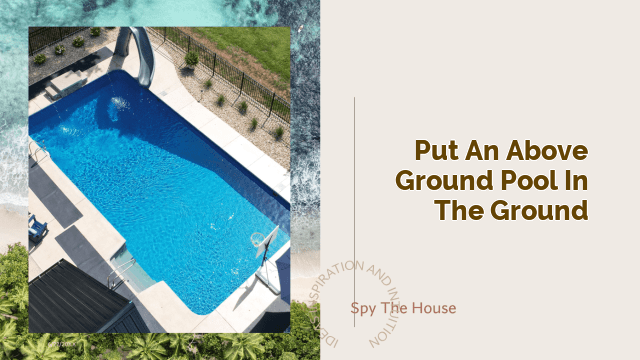Gap Between Pool Coping and Concrete: An Overview 🏊♂️
Pools are a great way to add fun and relaxation to your backyard. However, with the pleasure of owning a pool comes the responsibility of maintaining it. One of the common problems that homeowners face is the gap between pool coping and concrete. This gap can lead to serious problems, such as water leakage, and can ruin the overall look of your pool area. In this article, we will discuss the causes and solutions to the gap between pool coping and concrete.
Understanding the Gap Between Pool Coping and Concrete🏊♂️
Pool coping is the capstone edge that sits on top of the pool shell wall. It serves as a buffer between the pool and the surrounding deck or patio. Coping also prevents water from getting behind the pool shell and causing damage. The gap between pool coping and concrete is a space that is left intentionally during the installation process. It is necessary to accommodate the expansion and contraction of the pool shell and the surrounding concrete deck.
🏊♂️The gap is usually filled with a flexible sealant that allows for movement without breaking or cracking. However, over time, the sealant can break down, crack, or pull away from the coping or the concrete. This can cause water to leak behind the pool and damage the concrete deck. It can also create an unsightly gap that can collect dirt and debris.
Causes of the Gap Between Pool Coping and Concrete🏊♂️
There are several reasons why the gap between pool coping and concrete can occur. One of the most common causes is the natural movement of the ground. As the soil shifts, it can cause the pool and the surrounding concrete to move in different directions. This movement can create stress on the coping and the sealant, causing it to break down over time.
🏊♂️Another reason for the gap is the use of low-quality materials during installation. If the sealant or the coping material is of poor quality, it will break down faster and fail to hold up against the expansion and contraction of the pool and the concrete.
🏊♂️Lastly, inadequate installation can also cause the gap between pool coping and concrete. If the sealant is not applied correctly, it can fail to provide a proper seal, leading to water leakage and damage.
Solutions to the Gap Between Pool Coping and Concrete
🏊♂️If you notice a gap between pool coping and concrete, it is important to address the issue as soon as possible. Ignoring the problem can lead to more significant damage and costly repairs. Here are some solutions to the gap between pool coping and concrete:
Replace the Sealant🏊♂️
The first and most straightforward solution is to replace the sealant. This is a relatively easy and inexpensive fix that can be done by a professional or a homeowner with some DIY experience. The old sealant is removed, and new, flexible sealant is applied in its place. The new sealant should be able to accommodate the expansion and contraction of the pool and the concrete.
Add a Bond Beam🏊♂️
A bond beam is a reinforced concrete beam that is added around the perimeter of the pool. It serves as a structural support for the coping and prevents the gap from forming. This solution is more expensive and requires professional installation. However, it is a long-term solution that can prevent future problems.
Replace the Coping🏊♂️
If the coping material is old or of poor quality, it may be time to replace it. This solution involves removing the old coping and replacing it with a new one. This is a more expensive solution, but it can improve the overall look of your pool area and prevent future problems.
Fix the Installation🏊♂️
If the gap is caused by inadequate installation, it is important to address the issue before it gets worse. This may involve removing the coping and the surrounding concrete and reinstalling it correctly. This solution is more time-consuming and expensive, but it can prevent future problems and ensure that your pool area is safe and secure.
People Also Ask
Can You Use Caulk to Fill the Gap Between Pool Coping and Concrete?
🏊♂️Yes, you can use a flexible caulk to fill the gap between pool coping and concrete. However, it is important to use a high-quality caulk that can accommodate the expansion and contraction of the pool and the concrete. Low-quality caulk can break down quickly and lead to further problems.
How Wide Should the Gap Between Pool Coping and Concrete Be?
🏊♂️The gap between pool coping and concrete should be between ¼ inch to ½ inch. This allows for the natural expansion and contraction of the pool and the concrete without causing stress on the coping or the sealant.
How Often Should You Replace the Sealant Between Pool Coping and Concrete?
🏊♂️The sealant between pool coping and concrete should be replaced every 5 to 10 years, depending on the quality of the sealant and the amount of wear and tear.
Conclusion🏊♂️
The gap between pool coping and concrete is a common problem that can lead to serious damage if left untreated. It is important to address the issue as soon as possible and choose the right solution based on the cause and severity of the problem. Whether it is replacing the sealant, adding a bond beam, replacing the coping, or fixing the installation, taking action can save you time and money in the long run. Remember to work with a professional if you are unsure about the best solution for your pool area.






